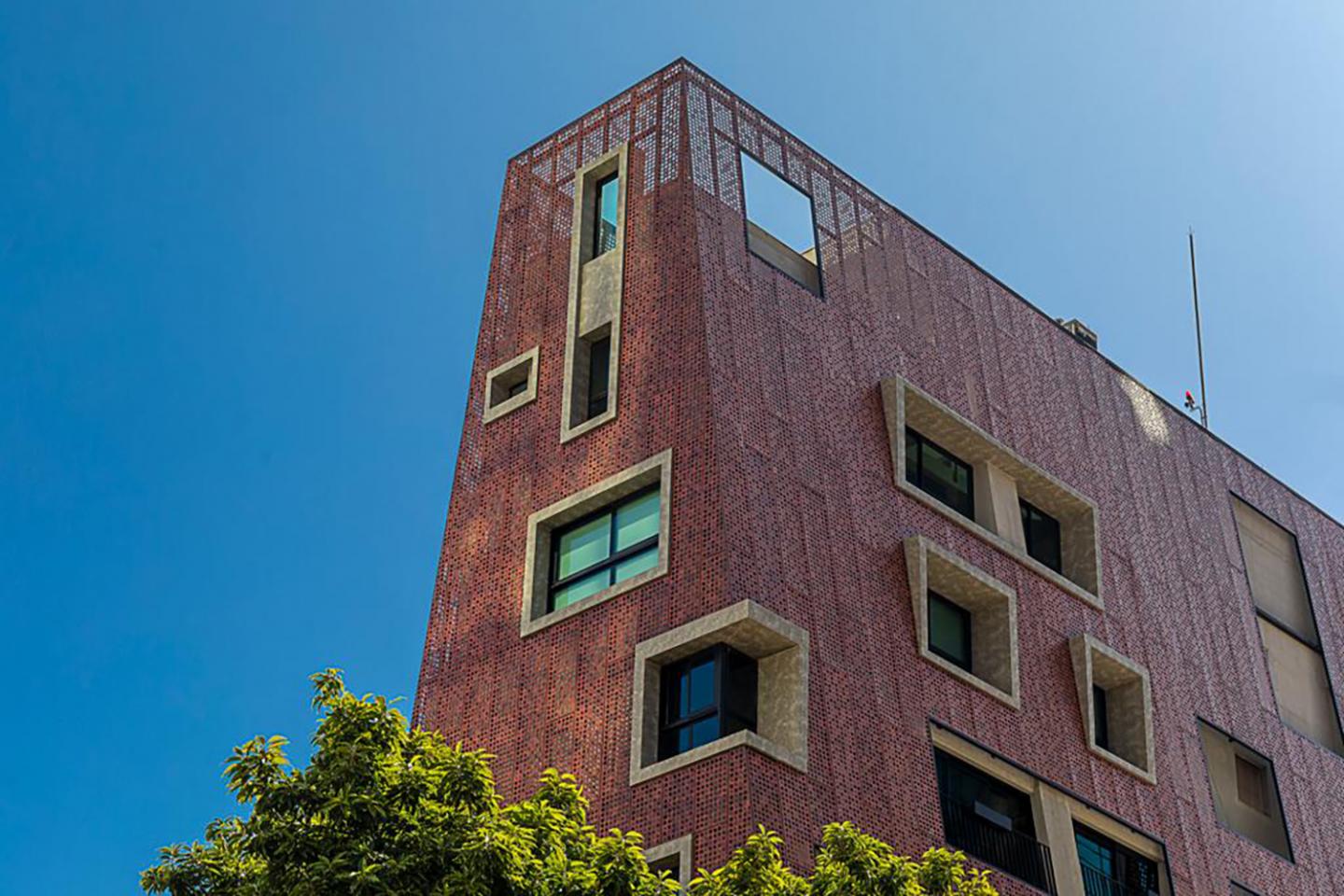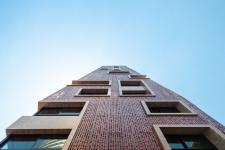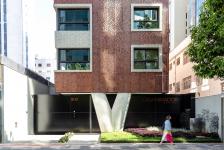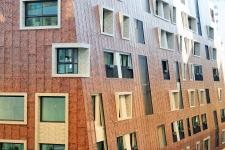The residential building CASAMIRADOR Savassi, completed in 2021 in Belo Horizonte (MG) Brazil, features architecture with bold design and stands out in the local landscape. With 14 lofts and 24 studios, it is spread over nine floors in a building located on a narrow lot, with a width of – merely - 12.7 meters. The mathematical challenge of its volumetry, observing the urban codes, was one of the factors that influenced in non-obvious decisions that resulted in an architecture with its unique identity.
The interdependence between its structure and the architectural concept allowed greater creative freedom, culminating in the most prominent element: a second skin that “wears” the building like a garment, giving it unique characteristics. The material used was aluminum, painted in sepia tone, an earthy red, an allusion to ore, raw material abundant in the state of Minas Gerais.
To gain lightness and transparency, the aluminum sheets received perforations in different sizes, made in an asymmetrical and yet harmonic way. This made it possible to see through it: inside the units, the city is denuded through the skin, but from the outside it is not possible to see inside, guaranteeing privacy to the resident. This element also made it possible to explore a rich range of effects, from hiding smaller, functional windows to tearing that skin to show the large spans. Conceived as generous openings, these openings allow the city to become an extension of the house, with plenty of light and natural air. They gained concrete frames, in contrast to the predominant oxidized color.
In the same way, the skin that covers the building also allows thermal comfort to the units. Away from the masonry, it provides shading of the fences and good ventilation through a mattress of renewable air. From this point of view, sustainability guided a large part of the project's choices. Due to the reduced dimensions of the land and little space on the roof for equipment or photovoltaic panels, it was necessary to find a solution that would avoid the entry of heat, to the detriment of an air conditioning project.
The pyramidal shape, resulting from the staggering, also made it possible to allocate technical areas on the external face of the masonry, and even so on the internal face of the skin, ensuring a clean and unadorned plastic.
Another highlight of the project concerns the challenge of placing the pyramid on the ground, touching the ground lightly at a single point. Under the influence of Brazilian architect Oscar Niemeyer, a “V”-shaped pillar was created, widely used in his works.
Finally, to ensure flatness on the facades, the sheets were bent on all four sides, which increased their rigidity. Although the sheets were randomly perforated, so that the joints were aligned and the volume was harmonious, several studies were carried out until the final fixing model, in the alignment of the slabs and at the midpoint of each floor. The study ensured optimization in the secondary structure for fixing the plates: there are only three horizontal profiles per floor, and the upper and lower profiles were also combined to fix the plates of the adjacent floors.
The volume plastic is the result of a marriage between covering sheets, frames and structure. There are three elements that alternate on the facades with greater or lesser relevance.
2017
2021
Production and construction: 2017-2021
Location: Belo Horizonte - Brazil
Area: 4600m²
Number of floors: 9
Number of units: 38
Ulisses Mikhail Itokawa, Helena Hostalácio, Iara Pimenta, Mariana Correa, Manuela Fratezzi, Luiza Menicucci, Gabriela Jacobina, Carla Medina, Fernanda Maia and Victor Lamounier.










